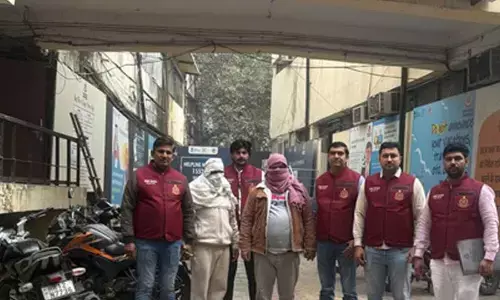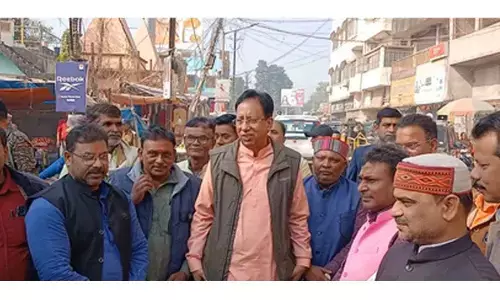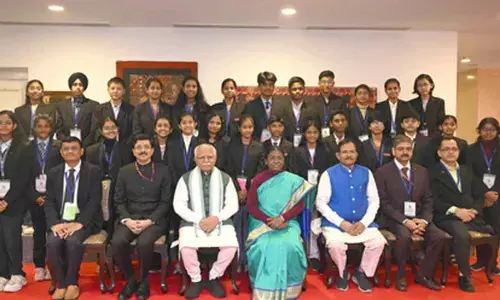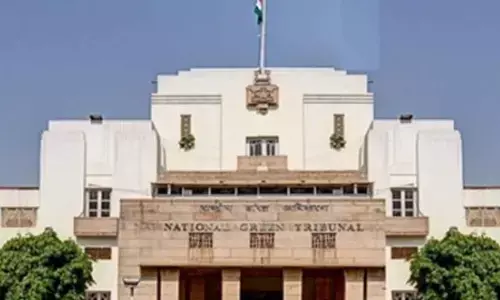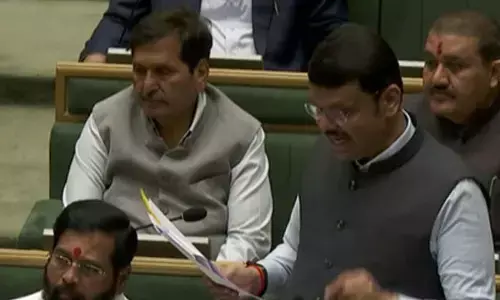Tourism In the North East of India – A Perspective:

Tourism In The North East Of India – A Perspective.From high mountain passes to the exotic tribal culture, the North East of India is truly stupendous in terms of grandeur and beauty.
From high mountain passes to the exotic tribal culture, the North East of India is truly stupendous in terms of grandeur and beauty. This region is quite unlike the rest of India. It is the chief tribal area of India with a great number of tribes who speak many different languages and dialects.
.jpg)
This region is one of the most beautiful parts of India. It has long remained in isolation but with the improved means of communications, the entire region is now well connected to the rest of India. However, in terms of tourism, the North East of India has a lot of catching up to do to be at par with mainland India.
Having been born and brought up in the gateway city of North East India – Guwahati still evokes images of the mighty Brahmaputra river meandering through much of the city and of those joyful days when as kids we would play beach cricket on the sandy stretches of the river bank every winter.
I am referring to the pre-terrorism days when there was rule of law and the average man on the street led a laidback lifestyle. The Oil industry was doing good business, the world famous Assam Tea was in a class of its own and the iconic Kaziranga National Park was the cynosure of all eyes, providing glimpses of the rare and endangered One-horned rhinoceros.
Other states like Meghalaya, Arunachal Pradesh, Mizoram, Nagaland, Manipur, Tripura and Sikkim played second fiddle to Assam – the gateway of North East India. Shillong –“Scotland of the East” and the capital of Meghalaya was the most visited hill station, surpassing even places like Guwahati and Kaziranga.
Thereafter, the equations began to change gradually. The dreaded ULFA appeared on the horizon in the early 90s. There was trouble brewing in Nagaland and the lethally armed NSCN militants were on the rampage. Mizoram too witnessed underground activities, albeit Laldenga’s Mizo National Front. A mushrooming of militant groups made a mockery of the Manipur’s stable political landscape and the tribal districts of Tripura were up in arms against the elected government.

The people of North East have for long suffered terribly at the hands of both the militant groups as well as the paramilitary forces. In certain pockets village after villages were torched and the local inhabitants were forced to flee into the jungle for safety. The element of safety offered by the densely forested tracts of the North East have even lured the militant groups into setting up camps and mention may be made of the Manas National Park in Assam, which of late has been conferred with the distinction of a World heritage Site by UNESCO. Even a few years back, Manas National Park was under the clutches of the dreaded Bodo tribal militants and it took a sustained military operation to drive off the militants from their jungle hideouts.
The situation is indeed alarming but it is not something that is beyond us to find a solution. Having spent more than 25 years of my life in the North East of India, I have witnessed the peace loving people taking to arms as a means to mitigate their anguish and their economic maladies. For much too long, the central government in Delhi offered a step-motherly treatment to this region. In terms of industrial development and wealth creation, the region has for a long time been in a splendid isolation. As a result of this neglect the pent up anger, frustration and aggravation of decade after decades of misgovernance has now spiraled into one of the biggest security concerns that the government of India is faced with.
However, all is not lost and after a thorough analysis of the North Eastern psyche, good sense has ultimately prevailed and today there is an exclusive Ministry for the Development of the North Eastern region that acts as a single window platform in terms of development and investment. The region’s stunning array of tourism products ranging from Anthropology to high mountain passes and haunting wilderness to the very best of handicraft items has finally found favor with the mandarins at New Delhi.

There has been a growing awareness on the part of the government that one of the most effective ways to combat terrorism in the North East of India doesn’t necessarily mean crushing rebellions with brutal paramilitary forces. The niche role that Tourism can play in eradicating terrorism has finally dawned upon the powers that be in Delhi and for the first time in many, many years, there is actually a proper Tourism Policy exclusively meant for the North East.
Apart from the up gradation of the existing tourist facilities namely Tourist Accommodation, Wayside Amenities, Budget Accommodation, Beautification and Refurbishment of Historical Monuments/Monasteries etc., promotion of Adventure Sports and providing Adventure Tourism equipments etc…, the Ministry of Tourism is going all out by way of promoting the North Eastern region in the competitive international travel market.
The fact that each of the North Eastern States are given a free booth in the world's largest Tourism Fair - International Tourism Mart, Berlin (ITB) is an indication of the governments efforts to promote tourism in this part of the world. A slew of measures like financial assistance for conducting fairs and festivals, priority publicity in the overseas offices of the Ministry of Tourism, planned development of Tourism circuits, interest subsidies on loans sanctioned by Tourism Finance Corporation of India and other financial institutions and waiving of expenditure tax etc… have been introduced which has already shown encouraging results.
On the positive role that Tourism or more appropriately – “Eco-Tourism” can play in combatting terrorism, I recently had a first hand experience of the extent to which this brand of Tourism can percolate in winning the hearts of the most hardened of militants.

I was on a visit to the world famous Manas National Park in Assam and on the advice of my Assamese friends I decided to check in at Manas Jungle Camp. The Camp, the first of its kind in Manas is run by a local NGO – “Manas Maozigendri Ecotourism Society”. We found the Camp with its 4 eco-friendly cottages to be very comfortable. The food was hygenic and the staff were warm and friendly, ever ready to help. Apart from providing quality jungle accommodation, which is infinitely more superior than the state government run Tourist Lodge, the Manas Maozigendri Ecotourism Society has been at the forefront of the revival of the National Park and has also undertaken the initiative of patrolling inside the park premises, helping self-help groups, encouraging local handicrafts etc… all of which has impressed the UNESCO World Heritage Commission.
We were most impressed with the quality of work that the Manas Maozigendri Eco-tourism Society was undertaking. Every morning we could see local village people, mostly belonging to the Bodo tribal community come to the Camp and undergo training on conservation. Presently there are around 200 volunteers who have registered with the Manas Maozigendri Eco-tourism Society. That’s not all. For an NGO, to build roads and bridges in one of the remotest corners of North East India is no mean feat. They also have an exclusive “Conservation Zone” wherein the volunteers play a crucial role in preserving the local flora and fauna.
The spirit of volunteerism shown by the members of the Manas Maozigendri Ecotourism Society was indeed praiseworthy. It is largely due to the pioneering role played by organizations like them and the cooperation of the Forest Department that revival of Manas National Park was possible. I was told by the Park Director that at one point of time, Manas National Park was under the clutches of terrorists and the manner in which Manas rose from the ashes of terrorism to the forefront of Eco-Tourism in the North East of India is truly commendable.
So there is always hope that with the aggressive development of Tourism in the North Eastern states and letting Tourism play the natural role of a catalyst, the disgruntled militants can be brought under the purview of development and offered a new lease of life.

Now that the Tourism ball in the North East has started rolling, a few points need to be considered. First is the integration of all the the State Tourism organizations under the ambit of one exclusive Tourism umbrella and the creation of a North East Tourism Board. Such a board with the full financial backing of the Central government would be a far better bet as far as promoting the entire region from a single platform rather than the dissipated efforts of each state.
Secondly, the geographic and ethnic landscape of the North East is unique in itself and instead of attracting mass tourism, the effort should be to promote niche tourism products like -
(1)Anthropological Tourism.
(2)Tribal Tourism.
(3)Folklore Tourism.
(4)Mountain Tourism.
(5)Handicrafts Tourism.
(6)Ethnic Tourism.
(7)Tea Tourism.
Thirdly, it should be a priority with the government to revive the Raj-era Golf Courses that are ideally nestled in the midst of Tea Gardens. They were originally intended to serve the recreational needs of the British Tea planters. By integrating the Golf Courses with heritage Raj-era Tea Garden Bungalows will create a platform to lure high spending tourists from North America, Europe as well as the Asia Pacific.
Fourthly, for Tourism to be successful in the North East, the need for a new age PR plan for the promotion of the North East region needs to be in place. It must be borne in mind that PR in Tourism is a specialized tool to create and maintain a positive image for a destination and is oriented towards creating and maintaining an atmosphere whereby the travelling public are convinced of the advantages of visiting the destination concerned.
Last but not the least, the proper identification of tribes for intensive exposure in terms of tourism wherein their unique festivals and fairs are highlighted needs to be chalked out.
What Ails North East Tourism:
With a little bit of soul searching, the answer to what ails tourism in the North East will not be hard to find. Significant clues as to what makes tourism in the North East backward, apart from the infrastructure bottlenecks are incorporated below –
1. Lack of trained people in the tourism sector:
The lack of trained people in the tourism sector is one of the major cause of the pathetic state of affairs in North Eastern region’s tourism scenario. In fact, the percentage of staff with a professional Tourism degree/Diploma is significantly low which has resulted in a rather amateurish ways of functioning. One significant side affect because of this paucity of trained tourism professionals at the helm of affairs is the utter confusion and lack of direction when it comes to managing the tourism industry.in this region.
2. Advertising & PR activities neglected:
In the field of Tourism, the need for making complete information and facts available to both the potential and actual tourists assumes significance and advertising and PR are tools to that end. This vital aspect has not been given its due importance by the region’s tourism industry. As a result tourist traffic to the North East has been miniscule when compared to the other states of India.

Familiarization Tours or FAM Tours whereby Travel Writers, Travel Agents, Photographers and Journalists are invited to visit a particular destination as guests to get first hand experience of the concerned destination has not figured prominently in the scheme of things as far as the manadarins of North East India’s Tourism industry are concerned. Also, radio and television contests featuring the North East has not materialised commercially.
One has to bear in mind that favorable acceptance of any tourist destination by the travelling public is of utmost importance and it is solely Advertisement and PR that makes it possible.
3. Lack of proper marketing strategy:
To be precise, the North Eastern states have never engaged themselves in big time marketing campaigns. Marketing being the arm of the tourism industry, helps to open up the frontiers. It is through a sustained marketing effort alone that the ultmate consumer gets to know about a destination.
4. Substandard tourist literature:
Substandard tourist literature is yet another factor that afflicts the tourism industry in the North East. The literatures that come out in the form of brochures, pamphlets and folders are not quite up to the international standards. The quality of paper used is downright poor, although of late there seems to be a marked improvement. Also, quite often the printing has its share of errors.

These are the finer things that speak a lot about the destination itself and producing high quality tourist literature backed up by a planned marketing blitz can do what six decades of unplanned, misdirected and erratic literatures couldn’t do.
5. Lack of professional travel agencies & tour operators:
What can be more unnerving then the fact that there are not more than five top-end travel agents in the region and most of them confined to the gateway city of Guwahati. Apart from Guwahati, a few reliable tour operators operate in the state of Sikkim, but they still have a long way to go to be on a level playing ground with their counterparts elsewhere in India.

What is alarming is the fact that each travel agent/tour operator has its own ways of projecting the region which amounts to bad publicity because the potential tourist becomes disillusioned as to the type of destination that the North East of India is. The need of the hour is a uniform projection of North East by forsaking petty one-upmanship as far as the travel agents/tour operators are concerned.
The Future Ahead:
The future of North East’s Tourism as I forsee it is nothing but success written all over. A region having a fabulous culture, heritage and tradition, great places of pilgrimages, rich flora and fauna, mesmerising wildlife, exotic hills and mountains, gorgeous rivers and above all, an extremely hospitable set of people cannot be kept in hibernation for too long.

There will definitely come a time when the whole of North East will reverberate with tourism activity. But how soon this turnaround is achieved will depend upon the pace at which the progressive reforms are practically applied in actual life and the sooner the mandarins of North East India’s tourism industry declare it as a “Special Interest Tourist Zone” the better it is for tourism to flourish in this virgin and last remaining ecological hotspot of India.
One needs to bear in mind that in case of “Special Interest Tourism” what the tourists demand is not luxury or high quality products and services, but real experiences during his /her holidays. The demand is for pleasant surroundings, usually at reasonable rates which the region does have in abundance.
The essentail ingredient of this new kind of tourism package is the organization of recreation which alone can enrich the tourism experience by allowing greater integration with the place visited and fuller involvement in the social and cultural life of the holiday destination, much the same way as the Australian Tourism industry does in case of the Aborigines and the New Zealand Tourism vis-a-vis promoting Maori tribes.
Even though the strife in the region continues unabated and visits to the North East are far from easy, it is hoped that Tourism will play the role of a harbinger of peace and stability in the region. After all, isn’t Tourism too vast an industry to be swallowed by Terrorism? Time will tell.
Conclusion:
All said and done, anyone, even a layman will tell you that the potential is very much there but needs to be properly harnessed. For a number of reasons India has always been touchy about the North East. In the days of yore and prior to India’s independence the usual route to the North East would have been through Bangladesh. In the past, the government too was sensitive about visitors and only permitted them to go to Assam and Meghalaya; the other five states, all bordering China or Burma, were for all practicle purposes off-limits. Even a visit to Assam and Meghalaya required a special permit, although this was readily available.
However, with a government that is pro-active and with the setting up of an exclusive Ministry for the Development of North Eastern region, the old prejudices are being replaced with a slew of developmental initiatives that is ushering in a new wave of prosperity.










